It has been a fiercely competitive race for the postseason in the Western Conference, where it took 50 wins to clinch a top-six seed while Sacramento and Golden State were unable to secure more than a spot in the lesser play-in game after racking up 46 victories.
[RELATED: NBA’s Play-In Field, Top-Six Playoff Seeds Set]
The Rockets’ fate this season epitomizes just how tough the path to the playoffs was in the West — at 41-41, Houston didn’t come particularly close to earning a play-in spot, ending up five games behind the No. 10 seed. But the Rockets finished comfortably ahead of the East’s bottom two play-in teams, with a full five-game cushion over the No. 10 Hawks.
This is a roundabout way of saying that while two good teams will be sent home this week, we should be in store for a terrific week of play-in games in the Western Conference, starting with a pair of matchups on Tuesday that could go either way.
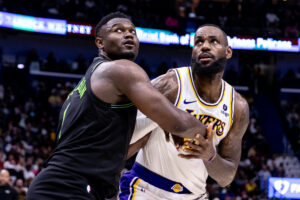 In the early game, the No. 7 Pelicans will host the No. 8 Lakers for the second time in three days. The results of Sunday’s contest weren’t particularly encouraging for the Pelicans, who could have clinched the No. 6 seed in the West with a victory, but trailed all afternoon en route to a 16-point loss.
In the early game, the No. 7 Pelicans will host the No. 8 Lakers for the second time in three days. The results of Sunday’s contest weren’t particularly encouraging for the Pelicans, who could have clinched the No. 6 seed in the West with a victory, but trailed all afternoon en route to a 16-point loss.
It was the third time in four games this season that New Orleans lost to Los Angeles, and none of those games were particularly close. Back in December, the Pelicans were blown out by the Lakers by 44 points in an embarrassing performance on a national stage in the in-season tournament semifinal.
Still, this is a talented Pelicans team that did beat the Lakers by 20 points in the clubs’ other game in New Orleans at the end of December. The Pelicans were above-average on both ends of the courts this season, ranking 11th in offensive rating and sixth on defense for a +4.6 overall net rating that was the No. 6 mark in the NBA. By comparison, the Lakers were just 15th in offensive rating and 17th on defense, for an overall +0.6 net rating (No. 19 in the league).
The Pelicans also have the cleaner injury report for Tuesday’s game, with all of their players available. However, Brandon Ingram has only been back from a knee injury for one game and wasn’t at his best on Sunday — New Orleans was outscored by 28 points during his 23 minutes of action.
The Lakers, meanwhile, will be missing Jarred Vanderbilt (foot) and Christian Wood (knee), while Anthony Davis (back) and LeBron James (ankle) are listed as questionable and probable, respectively. While Davis and James have been banged up in recent weeks, they’ve been very effective when they’ve played, and it’s a safe bet they’ll be suiting up on Tuesday.
One interesting wrinkle in this No. 7 vs. 8 matchup is that the winner earns a date with the defending-champion Nuggets in round one, while the loser will host a do-or-die play-in game on Friday for the right to face the upstart Thunder. While Oklahoma City would be the more favorable matchup, it seems safe to assume neither team will get too cute with Tuesday’s game — no one’s tanking in the postseason, and a victory in a second play-in game is hardly assured.
The oddsmakers at BetOnline.ag view the Pelicans/Lakers game as a toss-up, listing it as a straight pick-em. That’s not the case for the No. 9 vs. 10 game, where the visiting Warriors are 3.5-point favorites over the Kings in Sacramento.
Home underdogs aren’t especially common in the NBA playoffs, but it’s easy to understand why bettors would favor Golden State. The Warriors are an experienced, battle-tested club still headed by the core players – Stephen Curry, Klay Thompson, and Draymond Green – who have led the franchise to four championships since 2015.
The Dubs also beat the Kings in the first round of last season’s playoffs as a lower seed and have been the hotter team as of late. Golden State enters Tuesday’s play-in game having won 10 of its last 12 games, whereas Sacramento has been reeling in recent weeks. Once well positioned to push for a top-six spot, the Kings lost seven of 11 contests to wrap up their season, with three of their four victories during that stretch coming against lottery teams.
The Warriors are the healthier of the two clubs too. They’re missing Gary Payton II due to a left calf strain, but have more than enough depth to make up for Payton’s absence. The Kings, on the other hand, have had a harder time compensating for their missing wings, Malik Monk (right knee sprain) and Kevin Huerter (left shoulder surgery).
While the fans in Sacramento will create a favorable (and loud) home environment for the Kings, the Warriors have looked like one of the conference’s best teams during the latter half of the season — their 27-14 second-half record and +5.5 net rating during those games both rank third in the West.
We want to know what you think. Will it be the Lakers or Pelicans punching their ticket to the playoffs tonight? Which of the Warriors and Kings will stay alive, and which will see their season end today?
Vote in our poll, then head to the comment section to share your predictions!
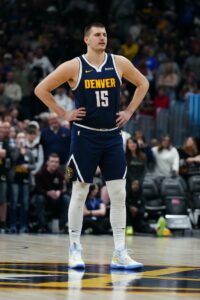 The Nuggets were in the driver’s seat for the top spot in the West, but as
The Nuggets were in the driver’s seat for the top spot in the West, but as 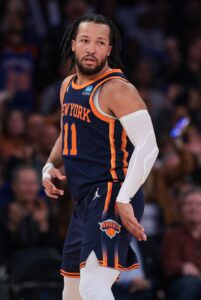 Still, Milwaukee remains at the front of this race. The Bucks own the tiebreaker over the Knicks, so they just need a win – or for all three teams to lose – in order to clinch No. 2. Unfortunately, they’re missing superstar forward
Still, Milwaukee remains at the front of this race. The Bucks own the tiebreaker over the Knicks, so they just need a win – or for all three teams to lose – in order to clinch No. 2. Unfortunately, they’re missing superstar forward  The NBA’s schedule-makers did well with Friday’s slate — the Magic will face the Sixers in Philadelphia, while the Cavaliers host the Pacers in Cleveland.
The NBA’s schedule-makers did well with Friday’s slate — the Magic will face the Sixers in Philadelphia, while the Cavaliers host the Pacers in Cleveland.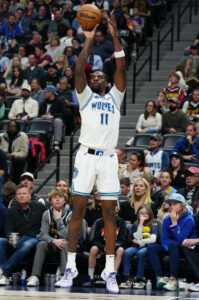 Nuggets center
Nuggets center  Bey, Maxey, and Quickley would have had qualifying offers worth $6,498,258, $6,259,588, and $6,128,004, respectively, if they had fallen short of the starter criteria. Instead, their QOs will each be worth $8,486,620.
Bey, Maxey, and Quickley would have had qualifying offers worth $6,498,258, $6,259,588, and $6,128,004, respectively, if they had fallen short of the starter criteria. Instead, their QOs will each be worth $8,486,620.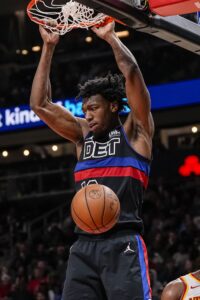 As a former No. 2 overall pick, Wiseman would have been in line for a qualifying offer worth $15,815,870 if he had made at least 41 starts or played 2,000 minutes. Because he fell short, his actual QO will be worth less than half that ($7,744,600).
As a former No. 2 overall pick, Wiseman would have been in line for a qualifying offer worth $15,815,870 if he had made at least 41 starts or played 2,000 minutes. Because he fell short, his actual QO will be worth less than half that ($7,744,600).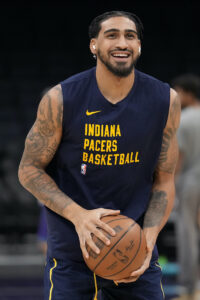 A top-14 pick who does not meet the starter criteria will receive a qualifying offer equal to the amount the 15th overall pick would receive if he signed for 120% of the rookie scale.
A top-14 pick who does not meet the starter criteria will receive a qualifying offer equal to the amount the 15th overall pick would receive if he signed for 120% of the rookie scale.